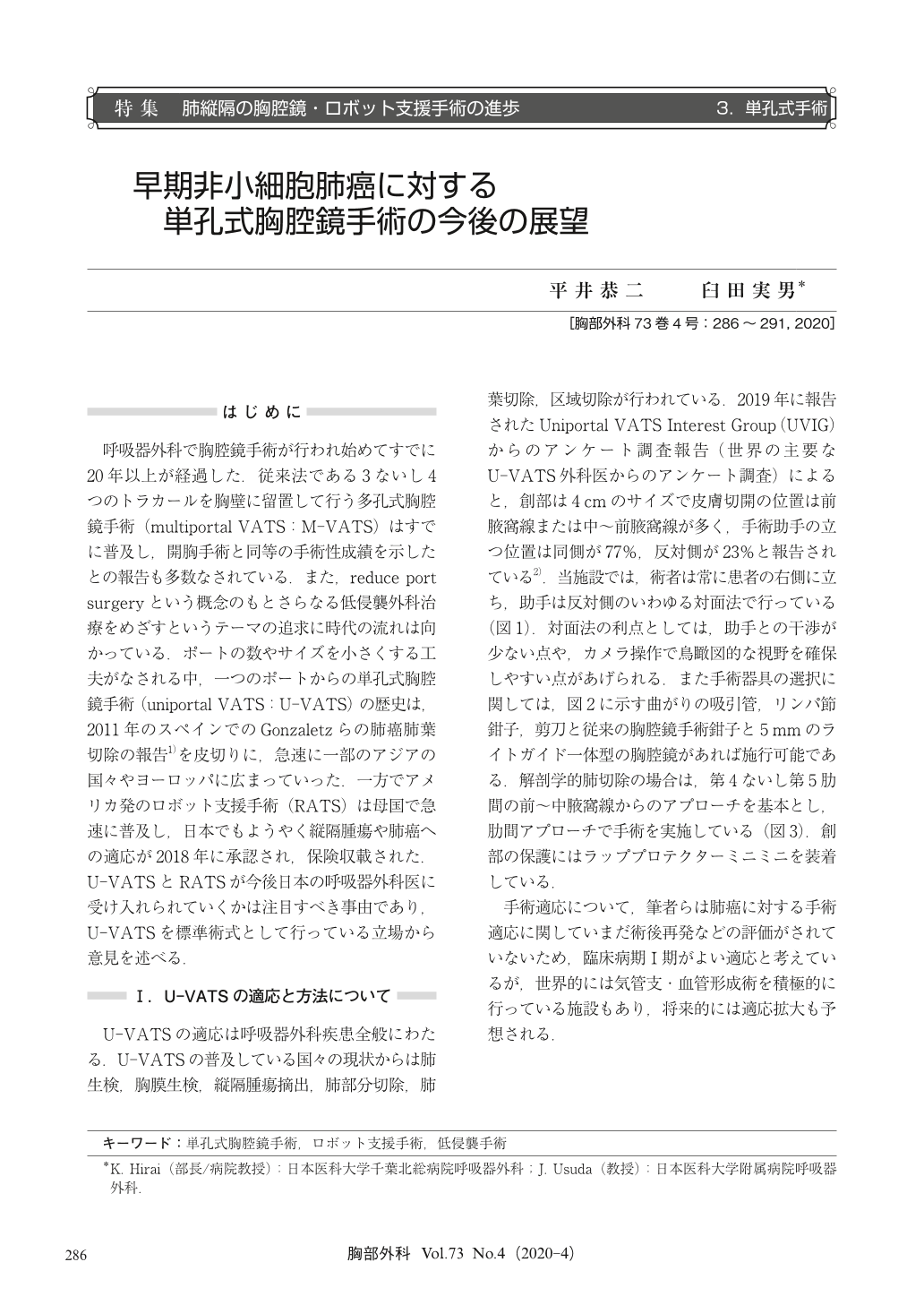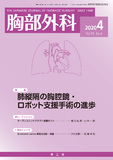Japanese
English
- 有料閲覧
- Abstract 文献概要
- 1ページ目 Look Inside
- 参考文献 Reference
呼吸器外科で胸腔鏡手術が行われ始めてすでに20年以上が経過した.従来法である3ないし4つのトラカールを胸壁に留置して行う多孔式胸腔鏡手術(multiportal VATS:M-VATS)はすでに普及し,開胸手術と同等の手術性成績を示したとの報告も多数なされている.また,reduce port surgeryという概念のもとさらなる低侵襲外科治療をめざすというテーマの追求に時代の流れは向かっている.ポートの数やサイズを小さくする工夫がなされる中,一つのポートからの単孔式胸腔鏡手術(uniportal VATS:U-VATS)の歴史は,2011年のスペインでのGonzaletzらの肺癌肺葉切除の報告1)を皮切りに,急速に一部のアジアの国々やヨーロッパに広まっていった.一方でアメリカ発のロボット支援手術(RATS)は母国で急速に普及し,日本でもようやく縦隔腫瘍や肺癌への適応が2018年に承認され,保険収載された.U-VATSとRATSが今後日本の呼吸器外科医に受け入れられていくかは注目すべき事由であり,U-VATSを標準術式として行っている立場から意見を述べる.
Uniportal video-assisted thoracic surgery (U-VATS) has become prevalent among thoracic surgeon in a part of countries including Japan. U-VATS and robotic-assisted thoracoscopic surgery (RATS) are 2 types of minimally invasive surgical techniques. Uniportal procedures are feasible although they can be technically challenging. RATS is superior to U-VATS in terms of the ability to perform procedures that require fine motor skills and to maintain wide visual fields during the procedure;however, it is not as feasible and more costly compared with U-VATS. U-VATS is also considered safer as it is easier than RATS to be converted to thoracotomy when needed. Thus, suitable procedures should be selected to meet the needs of specific cases. In the present study, we review the treatment outcomes of U-VATS for anatomical lung resection that were performed at our institution for patients with early-stage lung cancer.

© Nankodo Co., Ltd., 2020


